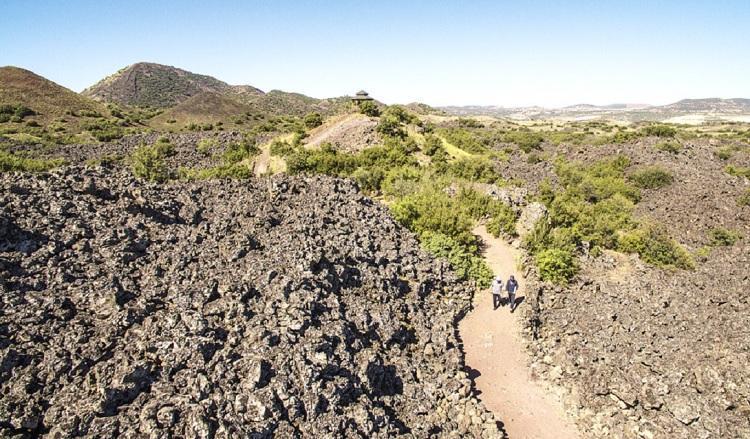
Western Turkey’s “burnt country” is back in UNESCO’s good graces – and that could be a boon for tourism.
The Kula-Salihli Global Geopark, which joined the UNESCO Global Geoparks Network in 2013, was given a “yellow card” at the end of UNESCO inspections in 2017 because it failed to meet some criteria.
But following improvements in line with UNESCO’s directives, the international body recently gave the geopark top marks, allowing the site to receive a “green card.”
“I believe that Kula-Salihli UNESCO Global Geopark will further increase its share in tourism and contribute to the economy of the region,” said Ahmet Serdar Aytaç, an academic.
Kula, defined by the ancient geographer Strabon as “Katakekaumene-Burnt Country” in his work “Geographika,” has more than 80 volcano cones, fairy chimneys, karst caves, canyons, rock tombs, stone bridges and historical houses over a large area.
Thanks to the regained status, the geopark will be internationally listed for the next four years at least, Kula-Salihli UNESCO Global Geopark Coordinator Professor Tuncer Demir recently told Anadolu Agency.
“As a result of not fulfilling the required criteria, the green card status turned into yellow card status, and [UNESCO] issued a two-year period to fulfill the criteria,” Demir said.
If authorities hadn’t conducted the improvements, Kula-Salihli risked exclusion from the UNESCO Global Geoparks Network.
“We carried out studies with our team and prepared for this inspection for two years,” Demir said, expressing their excitement at obtaining the green card once more. “We got full marks during the inspection and turned our status to green again. We will continue to represent Turkey in the UNESCO Global Geoparks Network.”
Although there has been a delay in the re-registration process due to the coronavirus outbreak, the area did regain its green card after online meetings.
The area is also an open-air laboratory, Aytaç said. “This area has the best examples of geological heritage as well as historical beauty,” Aytaç added.
“We also welcome guests from abroad as it is supported under the UNESCO umbrella,” he said.
Kula-Salihli Global Geopark
The Kula-Salihli Global Geopark is home to many geological, geomorphological and natural features. The existing area of the geopark was increased to 2,320 square kilometers by including the Salihli district in its borders.
Following the enlargement, the Adala Canyon, Sart Ruins, Bin Tepeler Mound Graves, Kurşunlu Hot Springs, Temple of Artemis and Gölmarmara Lake in Salihli are now part of the geopark network.